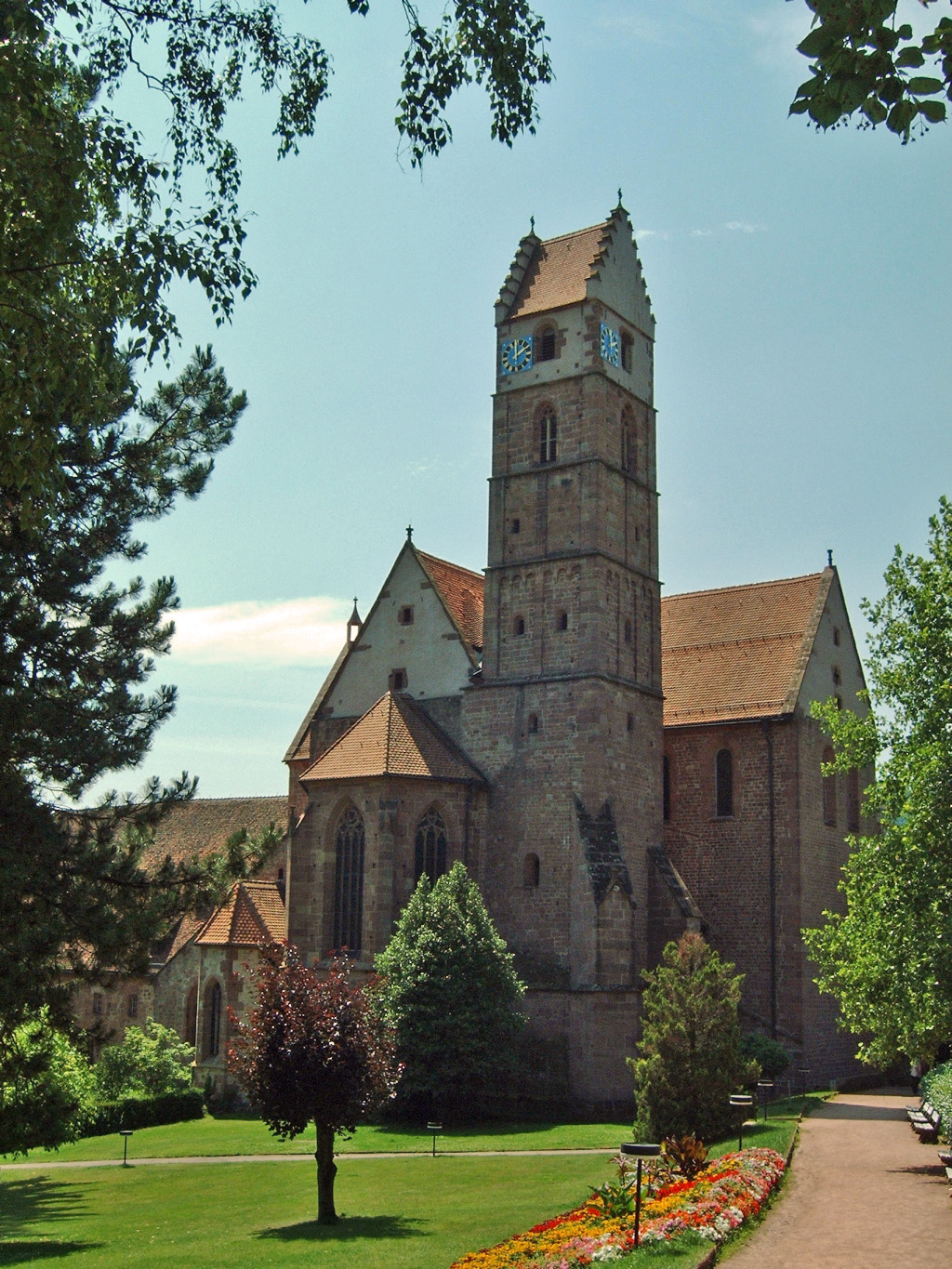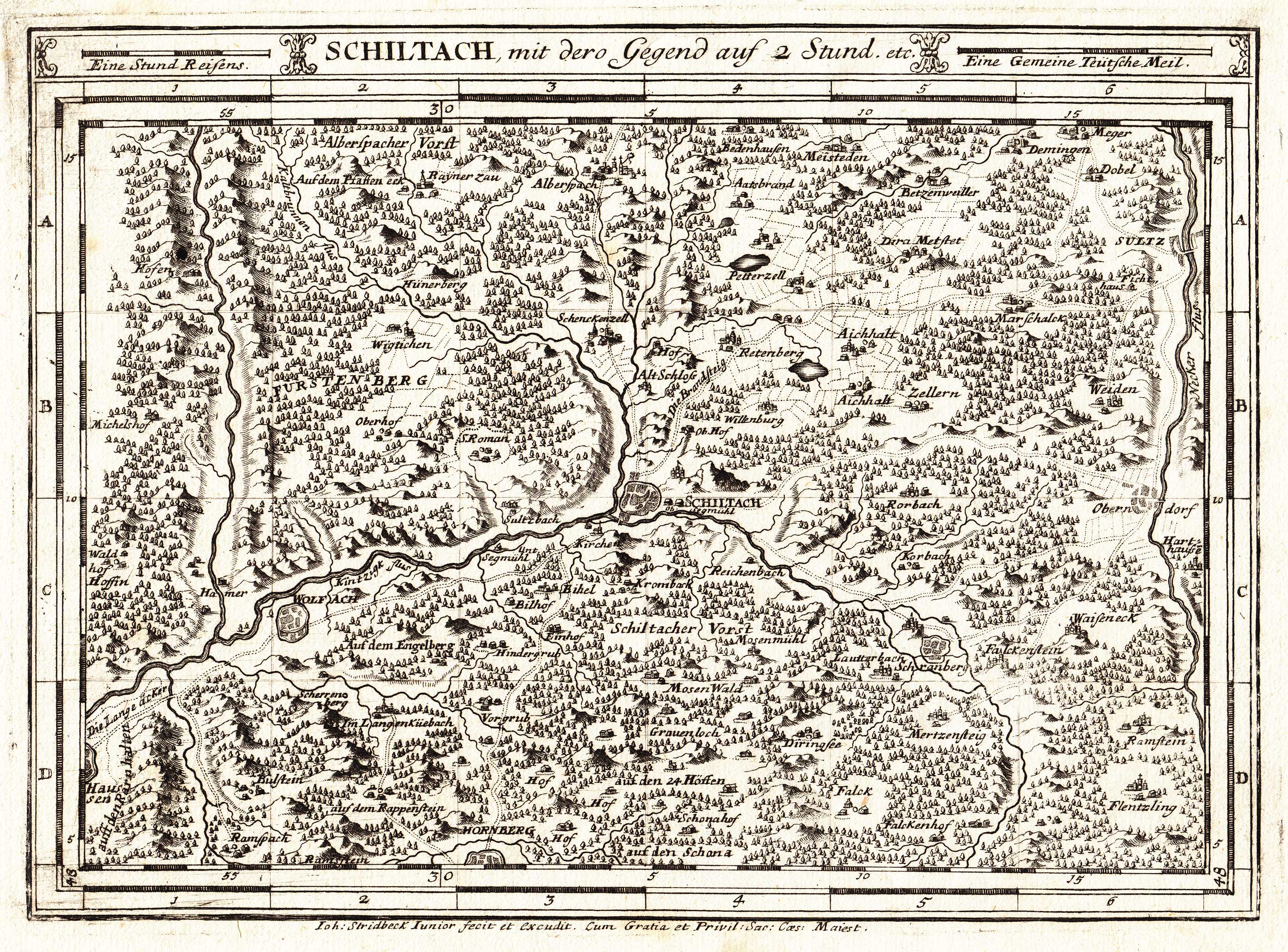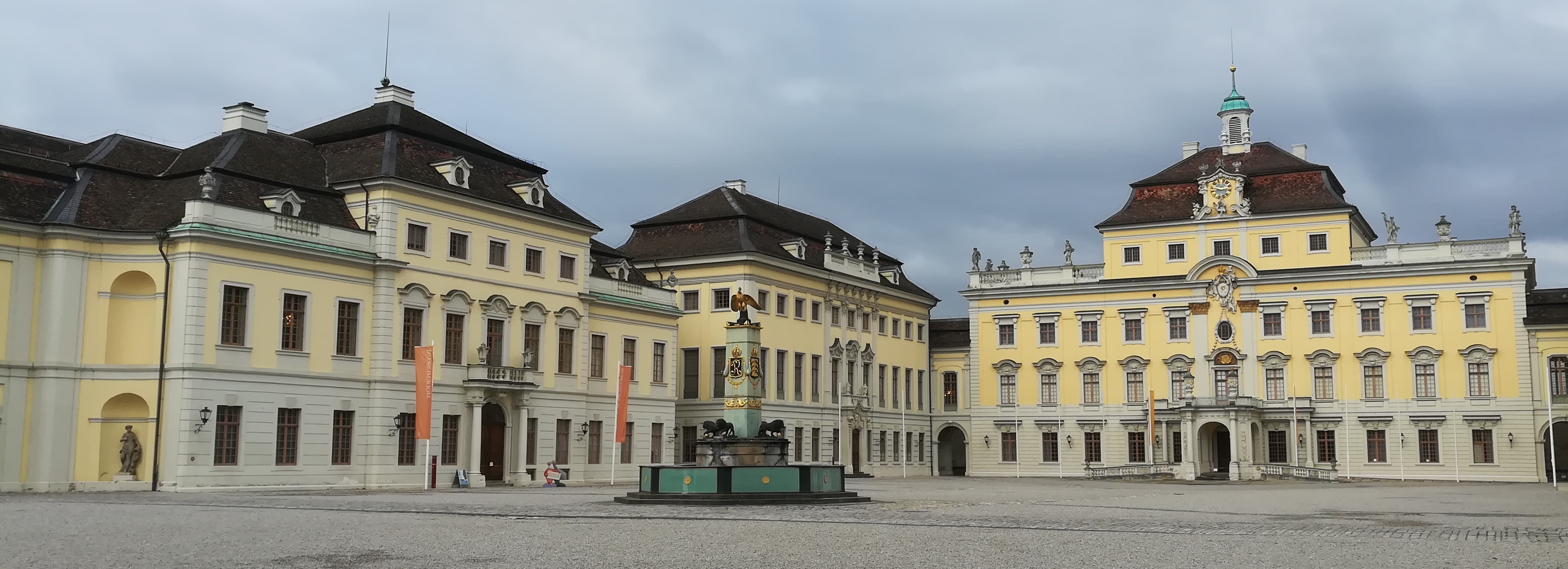|
Alpirsbach
Alpirsbach () is a town in the district of Freudenstadt in Baden-Württemberg, Germany. It is situated in the Black Forest on the Kinzig river, south of Freudenstadt. Because of the local brewery “Alpirsbacher Klosterbräu“, the monastery with the cloister concerts and the famous movable organ, as well as the Black Forest Ultra Cycling Marathon “SURM“, Alpirsbach is well-known beyond the region. History Alpirsbach developed as a market town around Alpirsbach Abbey, a Benedictine monastery founded in 1095. The monastery and its holdings were ceded to the Duchy of Württemberg by the Peace of Westphalia. In 1810, the by-then Kingdom of Württemberg made Alpirsbach the seat of a district office, but three years later it was assigned to . Alpirsbach received town privileges in 1869 and was connected by railroad in 1886. The township was reassigned to the district of Freudenstadt in 1938. After World War II, it began expanding along the steep mountain slopes of the Kinzig ... [...More Info...] [...Related Items...] OR: [Wikipedia] [Google] [Baidu] |
Alpirsbach Abbey
Alpirsbach Abbey (''Kloster Alpirsbach'') is a former Benedictine monastery and later Protestant seminary located at Alpirsbach in Baden-Württemberg, Germany. The monastery was established in the late 11th century and possessed considerable freedoms for an ecclesiastical property at that time, but in the 13th century it became a ''de facto'' possession of the Dukes of Teck and then the County of Württemberg. In the 15th century, the monastery enjoyed economic prosperity and was expanded but was dissolved with the conversion of the by-then Duchy of Württemberg to Lutheranism in the 16th century. The monastery became a seminary and boarding school until the 17th century and was physically reduced over the 19th century by land sales and demolition. Over the second half of the 20th century, the monastery was turned into a cultural fixture with annual concerts of Classical music and a museum of its history. History Early in 1095, three noblemen – Adalbert, Count of Zollern, Alw ... [...More Info...] [...Related Items...] OR: [Wikipedia] [Google] [Baidu] |
Kinzig (Rhine)
The Kinzig is a river in southwestern Germany, a right tributary of the Rhine. It runs for 93 km from the Black Forest through the Upper Rhine River Plains. The Kinzig valley and secondary valleys constitute the largest system of valleys in the Black Forest. Depending on the definition, the Kinzig is either the border between the Northern and Middle Black Forest or part of the Middle Black Forest. It is located entirely inside the State of Baden-Württemberg and its name is supposed to be of Celtic origin. During the last glacial period the Kinzig and the Murg created a common Kinzig-Murg river system. Course of the river The origin of the Kinzig is located on the land of the town of Loßburg in the district of Freudenstadt. It runs south, then makes a gradual turn to the west. It leaves the district of Freudenstadt just after it emerges from Alpirsbach, touches the district of Rottweil and continues to spend the largest part of its course in the district of Ortena ... [...More Info...] [...Related Items...] OR: [Wikipedia] [Google] [Baidu] |
Black Forest
The Black Forest (german: Schwarzwald ) is a large forested mountain range in the state of Baden-Württemberg in southwest Germany, bounded by the Rhine Valley to the west and south and close to the borders with France and Switzerland. It is the source of the Danube and Neckar rivers. Its highest peak is the Feldberg with an elevation of above sea level. Roughly oblong in shape, with a length of and breadth of up to , it has an area of about 6,009 km2 (2,320 sq mi). Historically, the area was known for forestry and the mining of ore deposits, but tourism has now become the primary industry, accounting for around 300,000 jobs. There are several ruined military fortifications dating back to the 17th century. History In ancient times, the Black Forest was known as , after the Celtic deity, Abnoba. In Roman times (Late antiquity), it was given the name ("Marcynian Forest", from the Germanic word ''marka'' = "border"). The Black Forest probably represented the bo ... [...More Info...] [...Related Items...] OR: [Wikipedia] [Google] [Baidu] |
Central Black Forest
The Central Black Forest (german: Mittlerer Schwarzwald), also called the Middle Black Forest, is a natural or cultural division of the Black Forest in Baden-Württemberg in Germany. It generally refers to a region of deeply incised valleys from the Rench valley and southern foothills of the Kniebis in the north to the area of Freiburg im Breisgau and Donaueschingen in the south. Its highest area, which is southeast of the Elz valley, is also part of the High Black Forest. Geography The dominating valley system of the Kinzig cuts through the Middle Black Forest from east to west. Prominent peaks are the Kandel (), Weißtannenhöhe (), Obereck (), Rohrhardsberg (), Brend (), Stöcklewald () and Mooswaldkopf () south of the Kinzig, and the Brandenkopf () and Lettstädter Höhe () north of the Kinzig. Geology Gneisses and granites predominate. Unlike the Northern Black Forest the Bunter sandstone covering with its plateau-like mountain shapes has only survived in a few pl ... [...More Info...] [...Related Items...] OR: [Wikipedia] [Google] [Baidu] |
Benedictine
, image = Medalla San Benito.PNG , caption = Design on the obverse side of the Saint Benedict Medal , abbreviation = OSB , formation = , motto = (English: 'Pray and Work') , founder = Benedict of Nursia , founding_location = Subiaco Abbey , type = Catholic religious order , headquarters = Sant'Anselmo all'Aventino , num_members = 6,802 (3,419 priests) as of 2020 , leader_title = Abbot Primate , leader_name = Gregory Polan, OSB , main_organ = Benedictine Confederation , parent_organization = Catholic Church , website = The Benedictines, officially the Order of Saint Benedict ( la, Ordo Sancti Benedicti, abbreviated as OSB), are a monastic religious order of the Catholic Church following the Rule of Saint Benedict. They are also sometimes called the Black Monks, in reference to the colour of their religious habits. The ... [...More Info...] [...Related Items...] OR: [Wikipedia] [Google] [Baidu] |
Duchy Of Württemberg
The Duchy of Württemberg (german: Herzogtum Württemberg) was a duchy located in the south-western part of the Holy Roman Empire. It was a member of the Holy Roman Empire from 1495 to 1806. The dukedom's long survival for over three centuries was mainly due to its size, being larger than its immediate neighbors. During the Protestant Reformation, Württemberg faced great pressure from the Holy Roman Empire to remain a member. Württemberg resisted repeated French invasions in the 17th and 18th centuries. Württemberg was directly in the path of French and Austrian armies who were engaged in the long rivalry between the House of Bourbon and the House of Habsburg. In 1803, Napoleon raised the duchy to be the Electorate of Württemberg of the Holy Roman Empire. On 1 January 1806, the last Elector assumed the title of King of Württemberg. Later that year, on 6 August 1806, the last Emperor, Francis II, abolished (de facto) the Holy Roman Empire. Geography Much of the territor ... [...More Info...] [...Related Items...] OR: [Wikipedia] [Google] [Baidu] |
Freudenstadt (district)
Freudenstadt is a ''Landkreis'' (district) in the middle of Baden-Württemberg, Germany. Neighboring districts are (from north clockwise) Rastatt, Calw, Tübingen, Zollernalbkreis, Rottweil and the Ortenaukreis. History The district was created in 1938 as the successor of the ''Oberamt Freudenstadt'' which dated back to 1806. In 1973 it was merged with the majority of the neighboring district of Horb, and some small parts of the districts of Wolfach and Hechingen. Geography The district is located in the middle part of the Black Forest mountains. The river Neckar The Neckar () is a river in Germany, mainly flowing through the southwestern state of Baden-Württemberg, with a short section through Hesse. The Neckar is a major right tributary of the Rhine. Rising in the Schwarzwald-Baar-Kreis near Schwen ... flows through the southeast of the district. Coat of arms Towns and municipalities References External links Official website(German, English, French) {{ ... [...More Info...] [...Related Items...] OR: [Wikipedia] [Google] [Baidu] |
Freudenstadt
Freudenstadt (Swabian: ''Fraidestadt'') is a town in Baden-Württemberg in southern Germany. It is capital of the district Freudenstadt. The closest population centres are Offenburg to the west (approx. 36 km away) and Tübingen to the east (approx. 47 km away). The city lies on a high plateau at the east edge of the north Black Forest, and is well known for its fresh air. Its city centre is famous as the largest market place in Germany. After Horb, it is the second largest city of the Freudenstadt district. The city has an administration partnership with the communities Bad Rippoldsau-Schapbach and Seewald. Freudenstadt is a climatic health resort of international renown. In the 19th and 20th centuries, visitors of note included George V of the United Kingdom, the Queen of Sweden, John D. Rockefeller, and even the American writer Mark Twain. With its many hotels and guest houses, and its high-class cuisine, Freudenstadt remains a popular vacation spot for Germans f ... [...More Info...] [...Related Items...] OR: [Wikipedia] [Google] [Baidu] |
Federal Republic Of Germany
Germany,, officially the Federal Republic of Germany, is a country in Central Europe. It is the second most populous country in Europe after Russia, and the most populous member state of the European Union. Germany is situated between the Baltic and North seas to the north, and the Alps to the south; it covers an area of , with a population of almost 84 million within its 16 constituent states. Germany borders Denmark to the north, Poland and the Czech Republic to the east, Austria and Switzerland to the south, and France, Luxembourg, Belgium, and the Netherlands to the west. The nation's capital and most populous city is Berlin and its financial centre is Frankfurt; the largest urban area is the Ruhr. Various Germanic tribes have inhabited the northern parts of modern Germany since classical antiquity. A region named Germania was documented before AD 100. In 962, the Kingdom of Germany formed the bulk of the Holy Roman Empire. During the 16th century, north ... [...More Info...] [...Related Items...] OR: [Wikipedia] [Google] [Baidu] |
Field (heraldry)
In heraldry, the background of the shield is called the '' field''. The field is usually composed of one or more tinctures (colours or metals) or furs. The field may be divided or may consist of a variegated pattern. In rare modern cases, the field or a subdivision thereof is not a tincture but is shown as a scene from a landscape, or, in the case of the 329th Fighter Group of the United States Air Force, blazoned as ''the sky proper''.''Air Force Combat Units of World War II'', p.210 Landscape fields are regarded by many heralds as unheraldic and debased, as they defy the heraldic ideal of simple, boldly-coloured images, and they cannot be consistently drawn from blazon. The arms of the Inveraray and District Community Council in Scotland have as a field ''In waves of the sea''. The correct language of heraldry is very flexible and virtually any image may be blazoned in a correct manner, for example "sky proper" might be blazoned simply ''Azure'' or ''bleu celeste B ... [...More Info...] [...Related Items...] OR: [Wikipedia] [Google] [Baidu] |
Or (heraldry)
In heraldry, or (/ɔːʁ/; French for "gold") is the tincture of gold and, together with argent (silver), belongs to the class of light tinctures called "metals", or light colours. In engravings and line drawings, it is hatched using a field of evenly spaced dots. It is very frequently depicted as yellow, though gold leaf was used in many illuminated manuscripts and more extravagant rolls of arms. The word "gold" is occasionally used in place of "or" in blazon, sometimes to prevent repetition of the word "or" in a blazon, or because this substitution was in fashion when the blazon was first written down, or when it is preferred by the officer of arms. The use of "gold" for "or" (and "silver" for "argent") was a short-lived fashion amongst certain heraldic writers in the mid-20th century who attempted to "demystify" and popularise the subject of heraldry. "Or" is sometimes spelled with a capital letter (e.g. "Gules, a fess Or") so as not to confuse it with the conjunction ... [...More Info...] [...Related Items...] OR: [Wikipedia] [Google] [Baidu] |
Crosier
A crosier or crozier (also known as a paterissa, pastoral staff, or bishop's staff) is a stylized staff that is a symbol of the governing office of a bishop or abbot and is carried by high-ranking prelates of Roman Catholic, Eastern Catholic, Eastern Orthodox, Oriental Orthodox, and some Anglican, Lutheran, United Methodist and Pentecostal churches. In Western Christianity the usual form has been a shepherd's crook, curved at the top to enable animals to be hooked. In Eastern Christianity, it is found in two common forms: tau-shaped, with curved arms, surmounted by a small cross; or a pair of sculptured serpents or dragons curled back to face each other, with a small cross between them. Other typical insignia of prelates are the mitre, the pectoral cross, and the episcopal ring. History The origin of the crozier as a staff of authority is uncertain, but there were many secular and religious precedents in the ancient world. One example is the lituus, the traditional ... [...More Info...] [...Related Items...] OR: [Wikipedia] [Google] [Baidu] |





